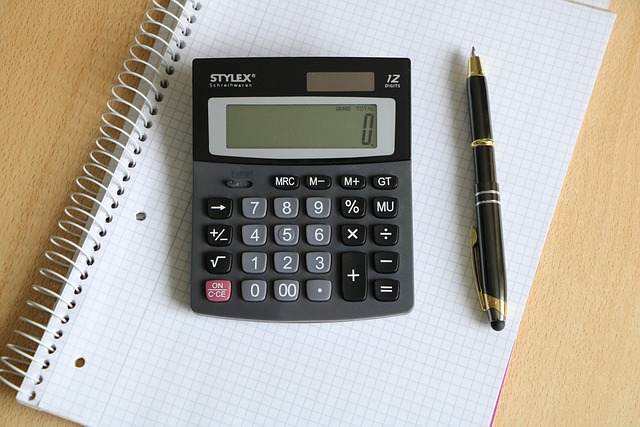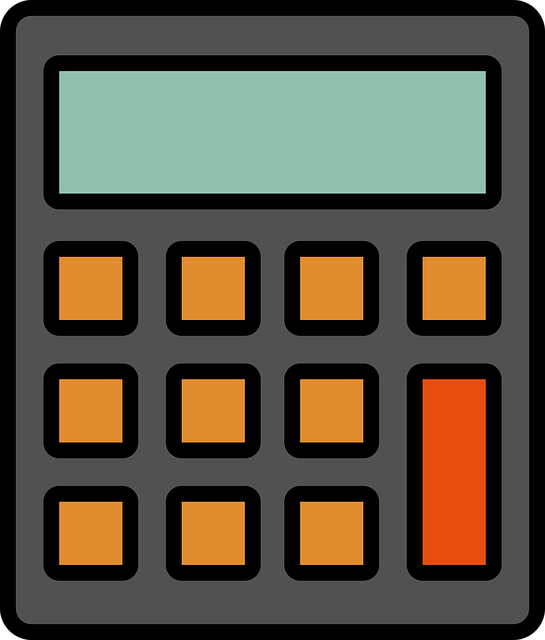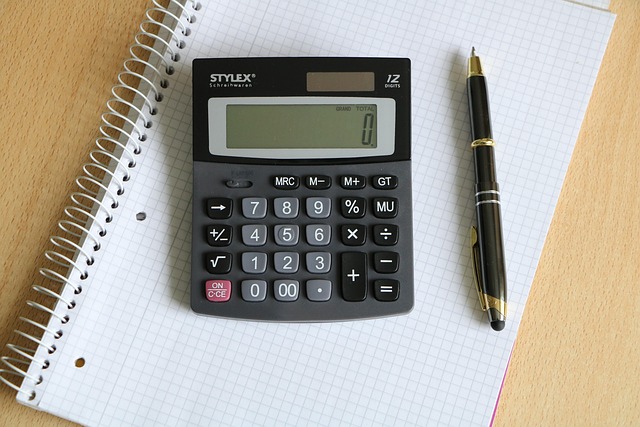Binance Spot Trading Calculator: A Practical Guide to Smarter Trades
Author: Jameson Richman Expert
Published On: 2025-11-14
Prepared by Jameson Richman and our team of experts with over a decade of experience in cryptocurrency and digital asset analysis. Learn more about us.
Binance spot trading calculator tools help traders estimate profits, losses, breakeven points, and position sizes before placing orders on spot markets. This comprehensive guide explains how Binance’s calculator works, the math behind profit/loss and breakeven calculations, real examples you can follow, best practices for risk management, and how to choose or build the right calculator for your needs. Whether you’re a beginner or an experienced trader, you’ll learn actionable strategies and the exact formulas to make better spot trading decisions.

What is a Binance Spot Trading Calculator?
A Binance spot trading calculator is a tool—either built into Binance’s trading interface or provided by third parties—that estimates the outcomes of spot trades. It calculates key values such as:
- Estimated profit or loss (P&L)
- Return on investment (ROI)
- Breakeven price factoring in fees
- Position size given risk tolerance
- Slippage and net proceeds after fees
These calculators let you preview trade results so you can size positions and place stop-loss/take-profit orders with confidence.
Why Use a Spot Trading Calculator?
- Risk management: Determine how much to risk per trade and avoid oversized exposure.
- Fee-aware decisions: Exchanges charge fees on buys and sells—calculators show net results after fees.
- Speed: Instantly compute outcomes instead of manual math during volatile markets.
- Record-keeping and planning: Consistent pre-trade calculations improve discipline.
Where to Find a Reliable Binance Spot Trading Calculator
Binance includes a built-in trading calculator in many of its trading interfaces. You can also use third-party calculators and spreadsheet templates. If you don’t have an account, you can create a Binance account here to access the built-in tools and the exchange’s fee schedule.
Other exchanges that provide calculators and alternative marketplaces include MEXC, Bitget, and Bybit.

Key Inputs for a Spot Trading Calculator
Most calculators ask for these inputs:
- Entry price: The price at which you buy the asset.
- Exit price (target): The price at which you plan to sell.
- Stop-loss price: The level where you will exit to limit losses.
- Account equity: Your total capital used for position sizing.
- Risk per trade: Percentage of equity you’re willing to lose (e.g., 1%).
- Exchange fee per side: Maker/taker fee rates (e.g., 0.10% per trade).
- Slippage estimate: Expected price movement during execution.
Important Related Concepts (Quick Definitions)
Before we dive into formulas and examples, here are a few references to authoritative sources for finance terms and spot pricing:
- Spot price (Wikipedia) — official definition of spot pricing.
- Position sizing (Investopedia) — why sizing matters.
- Binance fee schedule — official maker/taker fee details and VIP tier info.
Core Formulas Every Trader Should Know
These formulas are the backbone of a reliable spot trading calculator. Save them or implement them in a spreadsheet.
1) Profit / Loss (P&L) in USD
For a long trade (buy low, sell higher):
P&L = (Sell Price - Buy Price) × Units
Where Units = Position Value / Entry Price (or directly the number of coins you buy).
2) ROI (%)
ROI (%) = [(Sell Price - Buy Price) / Buy Price] × 100
To get ROI after fees, subtract fees from the numerator or compute net proceeds (illustrated below).
3) Breakeven Price (Including Fees)
Fees typically apply on both buy and sell sides. If the fee rate per side is f (as a decimal, e.g., 0.001 = 0.1%), then:
Breakeven Sell Price = Entry Price × (1 + f) / (1 - f)
This formula ensures the proceeds after selling (after the sell-side fee) equal the total cost when buying (including buy-side fee).
4) Position Size Based on Risk Amount
To limit dollar risk to a target amount (RiskAmount), set:
Units = RiskAmount / (Entry Price - Stop Price)
And
Position Value = Units × Entry Price
Alternatively, if you set risk as a percentage of equity (RiskPercent):
RiskAmount = Equity × RiskPercent
5) Net Proceeds After Fees and Slippage
If you sell at price S, with sell fee f and expected slippage s (decimal), estimated net proceeds per unit:
Net per unit = S × (1 - f) × (1 - s)
Multiply by units for total proceeds. Account for buy-side fee when computing net profit.

Worked Examples: Real-World Calculations
We’ll use concrete numbers so you can apply the same math to your trades.
Example 1 — Simple Profit and ROI
Inputs:
- Entry Price = $200
- Sell Price = $250
- Units = 2
- Fee per side = 0.10% (0.001)
Gross P&L = (250 - 200) × 2 = $100
Buy cost including fee = 200 × 2 × (1 + 0.001) = $400.40
Sell proceeds after fee = 250 × 2 × (1 - 0.001) = $499.50
Net P&L = 499.50 - 400.40 = $99.10
Net ROI = 99.10 / 400.40 × 100 = 24.74%
Note: The difference between gross $100 and net $99.10 equals the round-trip fees.
Example 2 — Breakeven Price with Fees
Given Entry Price = $200 and fee per side f = 0.001:
Breakeven Sell Price = 200 × (1 + 0.001) / (1 - 0.001) ≈ 200 × 1.001 / 0.999 ≈ 200.4004
You need about a 0.2002% gain to break even after fees.
Example 3 — Position Sizing Using Risk Percent
Inputs:
- Account Equity = $10,000
- RiskPercent = 1% → RiskAmount = $100
- Entry Price = $200
- Stop Price = $180
Price distance per unit = Entry - Stop = 20
Units = RiskAmount / 20 = 100 / 20 = 5 units
Position Value = 5 × 200 = $1,000 (10% of equity)
If price reaches the stop, loss = $100 as planned. Fees would add marginally to loss—account for them separately if you want exact figures.
Adding Slippage and Realistic Execution
In fast markets, you may not receive your target price; slippage matters. Add a slippage percentage to the worst-case exit price in the calculator. For example, assume 0.5% slippage on exit:
- Adjusted Sell Price = SellPrice × (1 - Slippage)
- Then compute net proceeds with fees against this adjusted price.
Many calculators allow you to input slippage to see conservative outcomes.
How Binance’s Built-in Calculator Differs from Third-Party Tools
Binance’s order panel often provides a built-in calculator for quick estimates. Benefits:
- Real-time price data from Binance order book
- Fee settings based on your VIP tier
- Integration with order placement — quick switch from calculation to execution
Third-party calculators or spreadsheet tools may offer:
- More customization (tax considerations, downloadable reports)
- Batch calculations for multiple positions
- Advanced scenarios (multi-leg trades, portfolio-level risk)
When accuracy and speed matter, use the exchange’s internal calculator. For deeper planning, build a spreadsheet or use a trusted external tool—just verify fee rates and slippage models against live market conditions.

Building a Simple Spot Trading Calculator in Excel/Google Sheets
Quick blueprint for a spreadsheet calculator. Create columns for these inputs:
- Entry Price
- Sell Price (target)
- Stop Price
- Account Equity
- Risk Percent
- Fee Per Side (decimal)
- Slippage (decimal)
Formulas to add:
- RiskAmount = Equity × RiskPercent
- Units = RiskAmount / (Entry - Stop)
- Gross P&L = (Sell - Entry) × Units
- BuyCost = Entry × Units × (1 + Fee)
- AdjustedSell = Sell × (1 - Slippage)
- SellProceeds = AdjustedSell × Units × (1 - Fee)
- Net P&L = SellProceeds - BuyCost
- ROI = Net P&L / BuyCost
- Breakeven = Entry × (1 + Fee) / (1 - Fee)
Once set up, you can quickly change inputs to model different scenarios.
Position Sizing Best Practices
- Never risk more than your predetermined percentage per trade. Many professional traders risk 0.5%–2% per trade.
- Account for fees and slippage. If your stop is tight you might want to reduce position size to allow for execution variance.
- Use position sizing to control drawdown. With consistent risk sizing, a string of losses won’t wipe out your account.
- Backtest sizing rules. Measure how different risk levels change long-term performance.
Tax, Reporting, and Record-Keeping
Good calculators make record-keeping easier by storing entry/exit prices, fees, and timestamps. For tax compliance, keep detailed trade logs. Cryptocurrency tax rules vary by jurisdiction; consult your local tax authority or a tax professional. Useful references include your government tax site (for example, the IRS in the U.S. — IRS guidance on virtual currencies).

Advanced Features to Look for in a Calculator
- Round-trip fee calculations: Always include buy and sell fees.
- Layered entries and exits: Model scale-in/scale-out strategies.
- Portfolio-level risk: Aggregate position exposure across assets.
- Tax lot tracking: FIFO/LIFO identification for taxable events.
- Real-time price feeds: For more accurate pre-trade analysis.
Common Mistakes Traders Make (and How Calculators Prevent Them)
- Ignoring fees: Underestimating fees reduces realized returns. Use the breakeven formula to see the real threshold to profit.
- Improper position sizing: Leads to outsized losses. Use a risk-based units formula.
- Not accounting for slippage: Overly optimistic targets may never be achieved when market depth is low.
- Forgetting exchange-specific rules: Some exchanges have maker/taker rebates or tiered fees. Verify your actual fee rate — see Binance’s fee schedule for details.
Examples of How Market Outlook Influences Calculator Inputs
When the market is trending strongly, you might widen stop distances to avoid being stopped out by volatility; this increases position size constraints. Conversely, in low-volatility markets, tighter stops increase potential position size for the same risk amount. For perspective on macro market direction and how that could affect your targets and risk, consult professional market analyses such as short-term forecasts—these can help you set realistic targets and slippage assumptions. For example, read an in-depth Ethereum outlook to align your trade targets with market context: Ethereum price prediction and short-term strategies.
For wider bitcoin market direction that may influence spot decisions, see this detailed market analysis: Is Bitcoin going up or down today? 2025 market analysis.

Third-Party Apps and Legitimacy
Always vet third-party calculators and apps for security. Some apps request API keys to read your balances or execute trades—use read-only keys when possible and never share withdrawal permissions. Before using a tool, read reviews and terms. For example, if you’re evaluating a trading or portfolio app, consult thorough reviews to confirm legitimacy and safety: Finance Legend app 2025 review and guide.
Checklist: Pre-Trade Using Your Binance Spot Trading Calculator
- Input current entry and realistic target/stop prices.
- Set account equity and risk percentage.
- Verify fee rates on the exchange (maker vs. taker). On Binance, check the official fee schedule (Binance fee schedule).
- Estimate slippage for that trading pair and time of day.
- Compute units, position value, net P&L and ROI, and breakeven price.
- Adjust trade size if projected net loss is larger than planned or if potential ROI is insufficient for the risk.
- Place the order and set stop-loss/take-profit orders where possible to enforce discipline.
Integrating Calculations with Execution
Many traders compute results and then move directly to executing trades on Binance or other exchanges. If you prefer alternatives or want multiple platforms, open accounts using the links below:
- Create a Binance account — access built-in calculators and live order books.
- Sign up at MEXC — another exchange with tools and competitive fees.
- Register on Bitget.
- Create a Bybit account.

Practical Tips for Better Calculator Use
- Update your fee rates: If you hold exchange tokens (e.g., BNB on Binance) that lower fees, update the fee input.
- Stress-test scenarios: Run best-case, base-case, and worst-case calculations to understand outcomes.
- Save templates: Keep templates for common trade sizes to speed up decision-making.
- Use stop-limit or OCO orders: Pair calculations with attached orders for disciplined trade management.
Security and Privacy Considerations
When using third-party calculators or apps:
- Prefer tools that don’t require trading permissions on your API key.
- Check app privacy policies and reviews.
- Use hardware or secure 2FA methods for exchange accounts to protect funds.
Summary and Next Steps
A binance spot trading calculator is an essential tool for every crypto spot trader. It removes guesswork, helps manage risk, and clarifies the true break-even points after fees and slippage. Implement the formulas shown here in your spreadsheet or use Binance’s built-in tools for fast execution. Remember to factor in fees, slippage, and realistic stop placement. If you want to dig deeper into market context for specific assets, check price outlooks and market analysis to set realistic targets—see the Ethereum short-term strategies and Bitcoin market analysis linked earlier.
If you don’t yet trade on Binance, you can open a Binance account here, or compare platforms using the alternative links to MEXC, Bitget, and Bybit.
Need a ready-to-use spreadsheet or a custom calculator tailored to your preferred fee structure and risk rules? Tell me your account size, fee rate, and desired risk percent and I’ll generate a step-by-step workbook or a template you can import into Google Sheets.